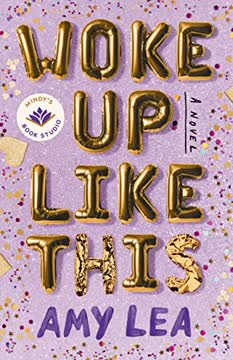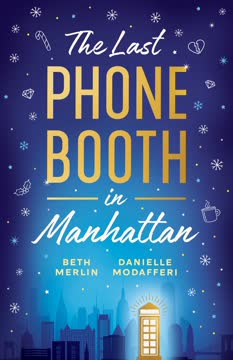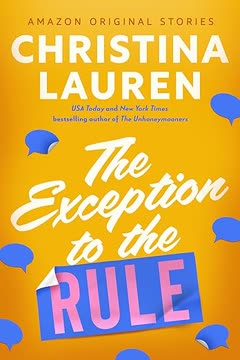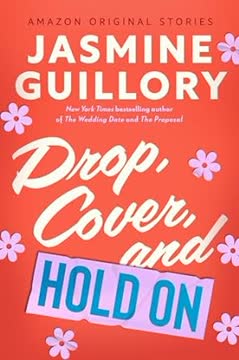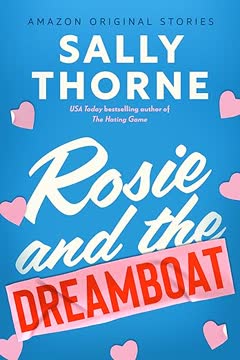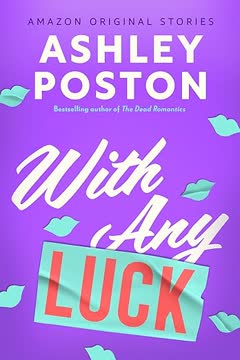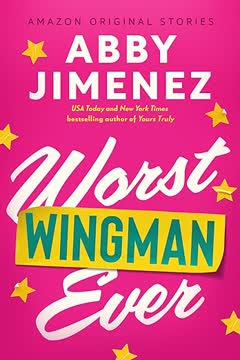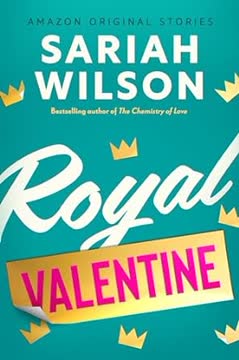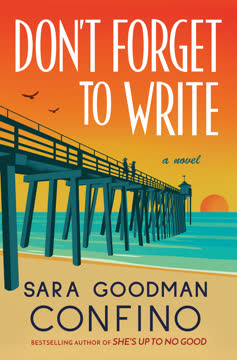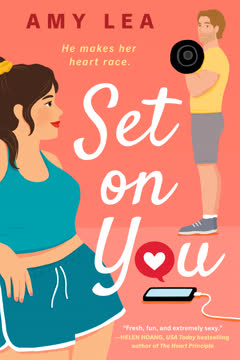Plot Summary
The Bucket List Obsession
Charlotte Wu, a high-achieving, list-obsessed high school senior, is determined to complete her childhood bucket list before graduation. She's vice president of student council, obsessed with planning the perfect prom, and desperate to check off every milestone, from getting a magical prom night to being "promposed" to. Her mother, a free-spirited aspiring novelist, urges her to slow down and enjoy life, but Charlotte clings to her lists as a way to control the chaos around her, especially after her father's abandonment. The pressure to achieve, to be perfect, and to not miss out on any "rite of passage" moments is both her comfort and her prison, setting the stage for the emotional journey ahead.
Enemies at the Helm
Charlotte's nemesis, J. T. Renner, is the charismatic, effortlessly popular student council president who seems to exist solely to thwart her. Their antagonism is rooted in a freshman-year betrayal—Renner stood her up for homecoming, then ran against her for president, stealing her dream role. Their dynamic is a constant push-pull of snark, competition, and unresolved tension. Charlotte's friends, Kassie and Nori, are caught in the crossfire, but the group's chemistry is undeniable. As prom approaches, Charlotte and Renner are forced to collaborate, their bickering masking a deeper connection neither is willing to admit.
Prom Theme Showdown
Charlotte's meticulously planned "Around the World" prom theme is shot down by Renner, who pushes for the cliché "Under the Sea." The group sides with him, leaving Charlotte feeling betrayed and out of control. Her sense of identity—tied to achievement and being the responsible one—takes a hit. Meanwhile, her best friend Kassie is increasingly distracted by her boyfriend Ollie, and Charlotte feels the first pangs of being left behind. The prom planning process becomes a battleground for Charlotte and Renner's rivalry, but also a crucible for their growing, unspoken understanding.
Tampon Catastrophe
In a moment of classic high school horror, Charlotte's bag rips open in the hallway, scattering tampons at the feet of her crush, Clay Diaz. The incident, witnessed by Renner, leaves her mortified and derails her confidence. The fallout is compounded by a failed scholarship interview and the realization that her friends are moving on without her. Renner, surprisingly, offers a rare moment of empathy, hinting at a more complex side beneath his golden-boy exterior. Charlotte's carefully constructed world is beginning to crack, exposing her insecurities and longing for connection.
Family Fractures Revealed
Charlotte's mother encourages her to reach out to her estranged father, who unexpectedly announces he's having a baby with his new girlfriend. The news stirs up feelings of abandonment and inadequacy, as Charlotte grapples with being replaced in her father's life. Meanwhile, Renner's own family is quietly unraveling—his parents are divorcing, and he's carrying the weight of his little sister's death. Both teens are forced to confront the messy, uncontrollable realities of family, and the ways these wounds shape their need for achievement, approval, and love.
Ladder, Time Capsule, Shock
While decorating for prom, Charlotte and Renner discover the senior time capsule. A static shock from the capsule and a fall from a ladder send them both into unconsciousness. When they wake, everything is different: they're in an unfamiliar house, in adult bodies, and apparently engaged to each other. The world is thirteen years older, and their memories of the intervening years are gone. The surreal, disorienting experience forces them to rely on each other as they try to piece together what happened and how to return to their real lives.
Waking Up Thirty
Charlotte and Renner, now thirty, are living together, engaged, and both teachers at their old high school. Their friends are older, relationships have shifted, and Charlotte's bucket-list dreams have played out in unexpected ways. The two scramble to act normal, attending their own joint bachelor/bachelorette party and trying to avoid suspicion. As they navigate their adult lives, they're confronted with the consequences of choices they don't remember making, and the realization that their rivalry has transformed into something deeper.
Future Lives, Missing Years
With the help of adult Nori, Charlotte and Renner learn about their missing years: they dated, broke up, reunited, and built a life together. Kassie and Ollie, once inseparable, have drifted apart. Charlotte's relationship with her father is complicated by his death, and she's left with unresolved grief. The friends' lives have diverged, and Charlotte is forced to confront the reality that not all relationships are meant to last forever. The search for meaning in their time jump becomes a quest to understand what truly matters.
Bachelor Party Revelations
At their engagement party, Charlotte and Renner are forced to perform the role of a loving couple. A staged kiss turns unexpectedly real, blurring the line between pretense and genuine emotion. The party is a microcosm of their adult lives—full of old friends, new dynamics, and the bittersweet realization that time changes everything. The experience brings buried feelings to the surface, forcing both to question what they want and whether their connection is fate or accident.
Chasing the Past
Desperate to return to their real lives, Charlotte and Renner attempt to recreate the ladder accident, consult Renner's physicist uncle about time travel, and brainstorm every possible solution. Along the way, they confront the gaps in their memories and the unresolved issues from their pasts—Charlotte's strained relationship with her father, Renner's grief, and the slow drift from old friends. Their journey becomes less about escaping the future and more about understanding themselves and each other.
Friendship Drift
Charlotte seeks out Kassie, now a yoga studio owner, to understand why their friendship faded. The meeting is bittersweet—full of nostalgia, regret, and the recognition that people grow apart. Kassie admits to her own struggles and choices, and Charlotte realizes that not all friendships are meant to last forever. The pain of letting go is tempered by gratitude for what they shared, and a new understanding of the importance of honesty and self-acceptance.
The Truth About Renner
A late-night conversation reveals the truth behind Renner's freshman-year betrayal: he never stood Charlotte up for another girl, but missed homecoming due to a family tragedy. The revelation shatters years of resentment and exposes the ways both have been shaped by misunderstandings and pride. Renner's vulnerability—his need to be liked, his guilt over his sister's death—mirrors Charlotte's own fears. Their honesty opens the door to forgiveness, connection, and the possibility of love.
Prom Night Choices
Back in their seventeen-year-old bodies, Charlotte and Renner return to the present with new perspective. Charlotte asks Renner to prom, but he's already committed to Andie. Heartbroken, she asks Clay instead, only to realize that her long-held crush is more fantasy than reality. On prom night, surrounded by friends and the culmination of her bucket-list dreams, Charlotte finally lets go of her need for control and perfection. She chooses to be present, to forgive, and to open her heart to what's real.
Facing the Future
As graduation approaches, Charlotte reconciles with her father, accepts the end of her friendship with Kassie, and acknowledges her feelings for Renner. The future is uncertain, but she's learned to let go of the past and stop obsessing over what's next. The lessons of her time jump—about love, loss, and living in the moment—reshape her understanding of happiness. She realizes that the best moments are often the ones you don't plan, and that true connection comes from vulnerability and honesty.
Letting Go, Living Now
On the dance floor at prom, Charlotte and Renner finally admit their feelings, both having remembered their shared future. They choose to make the most of their remaining time together, holding hands, laughing, and savoring every moment. The story ends with Charlotte writing a letter to her future self, urging her to let go of the past, stop waiting for the future, and treasure the now. The emotional arc comes full circle: from obsession with achievement to acceptance, forgiveness, and love.
Letter to Myself
Charlotte's letter to her thirty-year-old self encapsulates the novel's core lesson: goals are good, but happiness is found in the present. She urges her future self to appreciate each milestone, to let go of fear and anger, and to live fully in the moment. The letter is both a farewell to her childhood and a promise to carry forward the wisdom she's gained. It's a fitting end to a story about growing up, letting go, and waking up to what really matters.
Characters
Charlotte Wu
Charlotte is the quintessential overachiever, her life ruled by lists and a relentless drive for perfection. Her need for control stems from her father's abandonment and her mother's chaotic, creative energy. Charlotte's identity is tied to achievement, but beneath her ambition lies deep insecurity and a longing for connection. Her rivalry with Renner masks a crush and a fear of vulnerability. Over the course of the story, Charlotte learns to let go of her need for control, to forgive herself and others, and to embrace the messiness of life. Her journey is one of self-acceptance, learning that happiness isn't found in checking off boxes, but in being present and open to love.
J. T. Renner
Renner is the golden boy—popular, athletic, and seemingly carefree. But his charm is a mask for deeper pain: the loss of his little sister, his parents' divorce, and a compulsion to make others happy. His rivalry with Charlotte is both a defense mechanism and a way to stay close to her. Renner's need for approval drives him to avoid conflict and hide his vulnerabilities. Through the time jump, he's forced to confront his grief, his fear of not being enough, and his true feelings for Charlotte. His arc is about learning to be honest, to accept love, and to let go of the need to please everyone.
Kassie Byers
Kassie is Charlotte's childhood best friend, the life of the party and the center of attention. Her confidence masks a deep fear of abandonment and a tendency to avoid conflict. Kassie's relationships—especially with Ollie—often take precedence over her friendship with Charlotte, leading to feelings of betrayal and drift. Her dishonesty about Renner's feelings is rooted in jealousy and insecurity. As the story unfolds, Kassie is forced to confront the consequences of her actions and the reality that not all friendships are meant to last forever. Her arc is about honesty, self-awareness, and letting go.
Nori
Nori is the glue that holds the friend group together, her artistic spirit and offbeat humor providing levity and perspective. She's openly queer, unafraid to be herself, and often the voice of reason. Nori's willingness to believe in the impossible makes her the perfect confidante for Charlotte's time-travel dilemma. Her arc is less about change and more about steadfastness—she remains a constant, supportive presence, reminding Charlotte to embrace the unknown and trust in herself.
Ollie
Ollie is the classic good guy—athletic, kind, and devoted to Kassie. His relationship with her is both a source of joy and tension, as it often sidelines his friendships. Ollie's easygoing nature makes him a peacemaker, but also leaves him vulnerable to being overlooked. In the future, he's moved on, engaged to someone else, highlighting the impermanence of high school relationships. Ollie's arc is about growth, moving forward, and finding happiness beyond the familiar.
Clay Diaz
Clay is the object of Charlotte's long-standing affection—a smart, attractive, and seemingly perfect guy. But their interactions are always awkward, stilted, and ultimately unfulfilling. Clay represents the fantasy of high school romance, the idea that happiness lies in achieving a long-held goal. When Charlotte finally asks him to prom, she realizes that real connection can't be forced, and that sometimes what we want isn't what we need. Clay's role is to help Charlotte see the difference between fantasy and reality.
Andie
Andie is the girl who seems to have it all—beauty, confidence, and effortless charm. She's Renner's prom date, and her presence stirs up Charlotte's insecurities. Andie is not malicious, but her role in the story is to force Charlotte to confront her feelings for Renner and to let go of comparison. She represents the allure of perfection and the importance of authenticity.
Charlotte's Mom
Charlotte's mother is a creative, disorganized single parent who encourages her daughter to enjoy life and not take things so seriously. Her own struggles with relationships and time management are both a source of frustration and inspiration for Charlotte. Through her mother, Charlotte learns the value of imperfection, the importance of living in the moment, and the necessity of letting go.
Charlotte's Dad
Charlotte's father's departure is the wound that drives much of her need for achievement and approval. His attempts to reconnect—culminating in the revelation of his new family and eventual death—force Charlotte to confront her feelings of abandonment and the futility of seeking validation from others. His arc is about regret, reconciliation, and the limits of control.
Adult Nori
In the future, Nori remains a steadfast friend, helping Charlotte and Renner navigate their lost years and make sense of their predicament. Her willingness to believe in the impossible, her acceptance of change, and her loyalty provide comfort and guidance. Adult Nori embodies the idea that some connections endure, even as others fade.
Plot Devices
Time Jump as Emotional Catalyst
The central plot device—a time jump triggered by a fall and a static shock from the time capsule—serves as both a literal and metaphorical journey. It allows Charlotte and Renner to see the consequences of their choices, the impermanence of high school relationships, and the importance of living in the present. The device is used not for sci-fi spectacle, but as a means to explore regret, forgiveness, and the possibility of change. The time jump is both a warning and a gift, offering a glimpse of what could be and the chance to choose differently.
Dual Timelines and Memory Gaps
The narrative structure alternates between the present and the future, with Charlotte and Renner piecing together their missing years. The gaps in memory force them to rely on each other, to question their assumptions, and to confront the ways they've changed. The dual timelines create dramatic irony, as the reader knows more than the characters, and heighten the emotional stakes of their choices.
Foreshadowing and Symbolism
The time capsule, the bucket list, and the recurring motif of lists symbolize Charlotte's desire for control and her fear of the unknown. The prom, with its shifting themes and imperfect execution, represents the unpredictability of life. The repeated references to "Dirty Dancing" and the climactic dance scene serve as both homage and metaphor for taking risks and trusting in love. Foreshadowing is used to build tension and to underscore the inevitability of change.
Misunderstandings and Revealed Secrets
The story is propelled by misunderstandings—Renner's supposed betrayal, Kassie's lies, Charlotte's assumptions about her father. The gradual revelation of these secrets forces the characters to confront their own flaws, to forgive, and to move forward. The device is used not for melodrama, but to explore the ways we hurt and heal each other.
Letter to the Future
The novel ends with Charlotte's letter to her future self, encapsulating the lessons learned and providing closure. The letter is both a narrative device and a thematic statement, urging the reader to appreciate the present and to let go of fear and regret.
Analysis
Amy Lea's Woke Up Like This is a heartfelt, sharply observed coming-of-age story that uses the fantastical device of a time jump to explore the universal anxieties of growing up, letting go, and learning to live in the present. At its core, the novel is about the tension between control and surrender—between the comfort of lists, plans, and achievements, and the messy, unpredictable reality of life and love. Through Charlotte's journey, Lea interrogates the myth of the "perfect" high school experience, the fragility of friendships, and the dangers of defining oneself by external validation. The time jump is not just a plot twist, but a mirror: it forces the characters (and the reader) to confront the consequences of their choices, the inevitability of change, and the importance of forgiveness. The novel's greatest strength lies in its emotional honesty—its willingness to show that happiness is not found in checked boxes or flawless plans, but in the courage to be vulnerable, to forgive, and to embrace the now. In a world obsessed with achievement and the fear of missing out, Woke Up Like This is a timely reminder that the best moments are often the ones we don't see coming, and that growing up means learning to let go, to love, and to wake up to what really matters.
Last updated:
Review Summary
Woke Up Like This is a popular YA romance that has garnered mostly positive reviews. Readers praise its nostalgic '13 Going on 30' vibes, time-travel plot, and enemies-to-lovers trope. Many find it a fun, light-hearted read with relatable characters and important life lessons about living in the moment. The romance between Charlotte and J.T. Renner is particularly well-received. While some critics find it predictable or too reference-heavy, most readers enjoy the book's charm and emotional impact.
Similar Books
Download PDF
Download EPUB
.epub digital book format is ideal for reading ebooks on phones, tablets, and e-readers.
